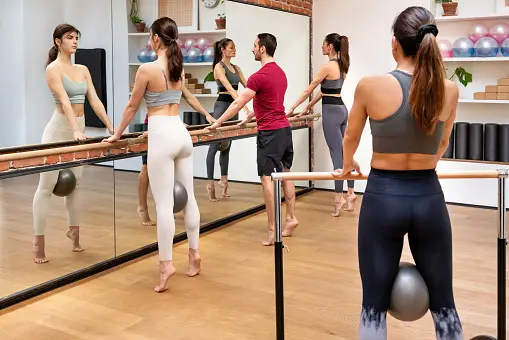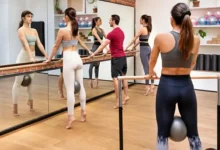The Benefits of Ballet Barre for Ballet Dancers

Ballet dancers dedicate themselves to rigorous training to excel in their artistry and reach peak performance. Central to their training is the ballet barre, a fundamental component of their regimen. This article will explore the advantages a barre brings to ballet dancers, from refining technique to mitigating the risk of injuries, ensuring a comprehensive approach to their training and well-being.
Improving Technique and Form:
The quest for impeccable technique and form lies at the heart of ballet training. They allow dancers to refine their movements, perfect their alignment, and develop the strength and flexibility necessary to execute complex choreography gracefully and precisely. By consistently practising at the barre, dancers can refine their technique and achieve greater mastery of the art form.
Enhancing Flexibility and Range of Motion:
Flexibility lies at the core of ballet, enabling dancers to embody the graceful lines and fluid motions emblematic of the art. They facilitate greater flexibility across the body by emphasising muscle elongation and expanding range of motion. This heightened flexibility enhances the aesthetic allure of their movements and diminishes injury risks by ensuring unhindered movement of muscles and joints, fostering fluidity and efficiency in their performances.
Building Strength and Endurance:
Ballet’s rigorous demands necessitate significant strength and endurance, particularly in vital areas like the core, legs, and feet. The repetitive nature of these exercises serves as a crucible for developing muscular strength and endurance, empowering dancers to navigate the rigorous demands of performances and rehearsals with aplomb. These exercises cultivate robust strength and enduring stamina through precise and deliberate targeting of distinct muscle groups via controlled movements. This grit is indispensable for executing the intricate choreography of ballet with grace, fluidity, and precision, showcasing the dancer’s dedication and mastery of their craft.
Fostering Balance and Stability:
Balance and stability are pivotal pillars in ballet dancers’ skill sets, who frequently execute intricate manoeuvres on a single leg or in precarious poses. These exercises challenge dancers to uphold balance and stability while navigating diverse movements and transitions. Through consistent engagement at the barre, dancers hone their proprioception and spatial awareness, honing an acute sense of their body’s position and movement in space. This heightened awareness translates to heightened confidence and mastery in their movements, both onstage and off, as they execute with poise and precision, reflecting their dedication to their craft.
Preventing Injuries and Promoting Recovery:
Due to ballet’s physically demanding nature, injuries are a common concern for ballet dancers. Barre workouts can help prevent injuries by strengthening muscles, improving flexibility, and promoting proper alignment and technique. Additionally, the low-impact nature of barre workouts makes them an ideal form of cross-training for dancers recovering from injuries, allowing them to maintain strength and conditioning while reducing stress on injured joints and muscles.
Enhancing Mental Focus and Concentration:
Ballet dancing requires intense mental focus and concentration, as dancers must memorise choreography, interpret musical cues, and execute precise movements with fluidity and expression. They allow dancers to hone their mental focus and concentration by requiring them to remain present and attentive throughout the workout. This enhanced mental discipline not only improves performance in the studio but also carries over into other areas of dancers’ lives.
Ballet barre is an invaluable tool for ballet dancers seeking to improve their technique, strength, flexibility, and overall performance. By incorporating barre exercises into their training regimen, dancers can reap many benefits that enhance their physical conditioning, mental focus, and artistic expression. From refining techniques to preventing injuries, they play a vital role in helping dancers achieve their full potential and excel in their craft.

